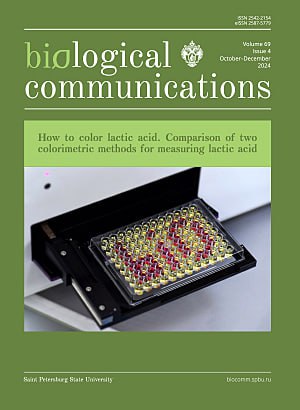Possibility of studying earthworm feeding ecology using mid-range infrared spectrometry
DOI:
https://doi.org/10.21638/spbu03.2024.406Abstract
Earthworms in forests ensure the return of nutrients to the soil by recycling litter. Climate warming promotes changes in the feeding ecology of earthworms, which leads to changes in soil nutrient cycling due to the saturation of biotopes with invasive plants and lumbricids. This study explored the use of mid-infrared (IR) spectrometry as a technique for identifying earthworm dietary preferences. In a controlled laboratory-based experiment, we examined how consumption of three different types of leaf litter — Populus tremula, P. sibirica, and Acer negundo — affects the IR spectra of three earthworm species — Eisenia nana, E. nordenskioldi, and E. ventripapillata. The results demonstrated that body composition changes in each earthworm species indicated the specific type of leaf litter ingested. Therefore, mid-infrared spectrometry is promising as a method for investigating the feeding preferences of earthworms.
Keywords:
earthworms, forest litter, food preferences, IR spectrometry
Downloads
References
Downloads
Published
How to Cite
License
Articles of Biological Communications are open access distributed under the terms of the License Agreement with Saint Petersburg State University, which permits to the authors unrestricted distribution and self-archiving free of charge.





